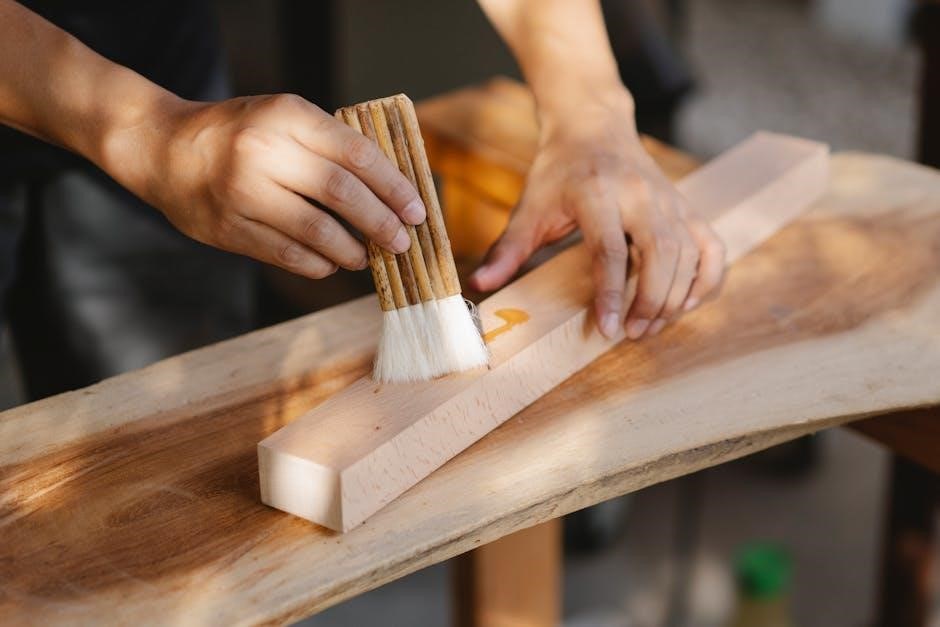hayward heatpro manual
Hayward HeatPro Manual: A Comprehensive Guide
This manual provides detailed instructions for the Hayward HeatPro, assisting pool owners in maximizing their heating experience and extending the swimming season․
Explore installation, operation, troubleshooting, and maintenance procedures, ensuring optimal performance and longevity of your HeatPro heat pump system․
Discover how to safely and efficiently operate your pool heater, benefiting from microchannel technology for cold plunging and extended pool use․
Avodate’s user-friendly platform and affordable services mirror the HeatPro’s accessibility, offering a seamless experience for all users seeking connection․
From error code explanations to coil cleaning, this guide empowers you with the knowledge to maintain a perfectly heated pool all year round․
The Hayward HeatPro represents a significant advancement in pool heating technology, offering homeowners an efficient and reliable solution for maintaining comfortable water temperatures․ This series of heat pumps is designed to extend the swimming season, allowing for enjoyable pool use even during cooler months․
Featuring innovative microchannel technology, the HeatPro delivers exceptional heat transfer and corrosion resistance, ensuring long-lasting performance․ It’s a system built for both new installations and as a replacement for older, less efficient heaters․ The HeatPro’s design prioritizes ease of use, with a user-friendly control panel and straightforward operation․
Like Avodate’s commitment to meaningful connections, Hayward focuses on providing a seamless and satisfying experience․ This manual serves as your comprehensive guide, detailing everything from initial setup to ongoing maintenance․ Understanding the HeatPro’s capabilities will empower you to optimize its performance and enjoy years of trouble-free operation․ It’s a smart investment for any pool owner seeking warmth and convenience․
Understanding HeatPro Models
The Hayward HeatPro series encompasses a range of models, each designed to cater to different pool sizes and heating demands․ Key differentiators include BTU input, flow rate capabilities, and electrical requirements․ Selecting the appropriate model is crucial for optimal efficiency and performance․
Lower BTU models are ideal for smaller pools or warmer climates, while higher BTU units are necessary for larger pools or regions with colder temperatures․ Understanding these specifications ensures the HeatPro can effectively maintain the desired water temperature․ Like choosing the right features on Avodate, selecting the correct HeatPro model is about finding the perfect fit․
Consider your pool’s surface area, average water temperature, and local climate when making your selection․ Hayward provides detailed specifications for each model, allowing for informed decision-making․ This manual will help you navigate these options, ensuring you choose a HeatPro that meets your specific needs and maximizes your investment․
Safety Precautions and Warnings
Prioritizing safety is paramount when installing and operating a Hayward HeatPro․ This unit operates with high voltage electricity and handles heated water, presenting potential hazards if not handled correctly․ Always disconnect power before performing any maintenance or inspection․ Improper installation can lead to electrical shock, fire, or equipment damage․
Never operate the HeatPro if it shows signs of damage, such as cracked housings or frayed wiring․ Ensure all plumbing connections are secure to prevent leaks and potential scalding․ Like the safety measures emphasized on platforms like Avodate, protecting yourself is key․
Adhere to all local electrical codes and regulations during installation․ This equipment should be installed by a qualified technician․ Read and understand all warnings and instructions in this manual before operation․ Failure to follow these precautions could result in serious injury or property loss․

Installation and Setup
Proper installation is crucial for optimal HeatPro performance․ This involves a pre-installation checklist, secure plumbing connections, and correct electrical wiring procedures․
Follow all guidelines carefully to ensure safe and efficient operation, mirroring the careful connections sought on platforms like Avodate․
Pre-Installation Checklist
Before beginning the installation of your Hayward HeatPro, a thorough pre-installation checklist is essential for a smooth and successful setup․ First, verify that all local codes and regulations are met regarding pool heating equipment installation․ Confirm adequate electrical supply is available, matching the unit’s requirements – detailed in the technical specifications section of this manual․
Next, inspect the physical location for sufficient space around the unit for maintenance and airflow, ensuring unobstructed access․ Assess the existing plumbing to confirm compatibility with the HeatPro’s connections, and gather all necessary fittings and materials; Ensure the pool pump is appropriately sized to deliver the required flow rate for optimal heat pump operation․ Finally, familiarize yourself with all components and read the entire manual before proceeding, much like carefully reviewing profiles on a dating site like Avodate before making a connection․
Having everything prepared upfront will minimize delays and ensure a safe, efficient installation process․

Plumbing Connections
Establishing correct plumbing connections is crucial for the efficient operation of your Hayward HeatPro․ Begin by ensuring the pump and filter are clean and free of debris before connecting the unit․ Utilize appropriate PVC piping and fittings, adhering to local plumbing codes and using PVC primer and cement for secure, leak-proof joints․
Connect the water inlet to the HeatPro’s designated port, and the outlet to the pool’s return line․ A union fitting is recommended on both inlet and outlet for easy removal and maintenance, similar to how Avodate allows users to easily manage their connections․ Properly support the piping to prevent strain on the unit․ Always double-check all connections for tightness before initiating water flow․ Avoid using metal pipes directly connected to the HeatPro to prevent corrosion․
Careful plumbing ensures optimal heat transfer and prevents potential damage․
Electrical Connections
Prior to any electrical work, completely disconnect power at the breaker panel․ Electrical connections must be performed by a qualified electrician, adhering to all local and national electrical codes․ Verify the HeatPro’s voltage requirements match your electrical supply – incorrect voltage can cause severe damage․ Use appropriately sized wiring, as specified in the unit’s technical specifications, to handle the electrical load;
Connect the ground wire securely to the designated grounding terminal on the HeatPro․ Follow the wiring diagram provided with the unit carefully, ensuring correct phase connections․ A dedicated circuit breaker is highly recommended to prevent overloading․ Install a weatherproof electrical enclosure to protect connections from the elements, mirroring Avodate’s commitment to user safety; Double-check all connections for tightness and proper insulation before restoring power․

Safe and correct electrical installation is paramount for reliable operation․

Operation and Control
The HeatPro’s control panel offers intuitive operation, allowing precise temperature adjustments and mode selection for optimal pool heating performance․
Explore various modes, mirroring Avodate’s personalized matchmaking, to tailor your heating experience to specific needs and preferences․
Understand the heat pump’s cycle, ensuring efficient and cost-effective pool temperature maintenance throughout the swimming season․
HeatPro Control Panel Overview
The Hayward HeatPro control panel is designed for user-friendly operation, providing a clear interface to manage your pool heating system․ Key components include the digital temperature display, which accurately shows the current water temperature and the setpoint․ Up and down arrow buttons allow for precise temperature adjustments, enabling you to customize the heating to your comfort level․
Mode selection buttons cycle through various operational settings, such as Heat, Cool (if equipped), and Auto modes․ The Auto mode intelligently adjusts heating based on the setpoint and ambient temperature, maximizing efficiency․ A power button controls the unit’s on/off functionality, while indicator lights display the system’s status – heating, cooling, or standby․ Error codes are also displayed on the panel, providing valuable diagnostic information in case of issues․
Familiarizing yourself with these controls, much like navigating Avodate’s features, ensures a seamless and enjoyable experience․ The panel’s intuitive layout makes it easy to monitor and adjust your pool’s temperature, creating the perfect swimming environment․
Setting the Desired Water Temperature
To set your desired pool water temperature with the Hayward HeatPro, begin by pressing the “Up” or “Down” arrow buttons on the control panel․ Each press adjusts the temperature by one degree, allowing for precise control․ The digital display will show the new setpoint as you make adjustments․ Consider your comfort level and the intended use of the pool when selecting a temperature․
A typical range for pool heating is between 80°F and 86°F (27°C and 30°C)․ However, you can adjust this based on personal preference․ Remember that higher temperatures consume more energy, so balancing comfort with efficiency is key․ Allow several hours for the HeatPro to reach the set temperature, especially after initial setup or significant changes․
Similar to finding the right match on Avodate, setting the ideal pool temperature requires a bit of fine-tuning․ Monitor the water temperature after making adjustments to ensure it meets your expectations and enjoy your perfectly heated pool!
Understanding Heat Pump Operation Modes
The Hayward HeatPro offers several operation modes to optimize performance and energy efficiency․ The primary modes include “Heat,” “Cool,” and “Auto․” In “Heat” mode, the unit actively warms the pool water to the set temperature․ “Cool” mode, utilizing microchannel technology, can lower the water temperature for a refreshing cold plunge experience․ “Auto” mode intelligently switches between heating and cooling based on the ambient temperature and setpoint․
Additionally, a “Boost” mode provides maximum heating output for rapid temperature increases, ideal after initial startup or during colder periods․ The “Economy” mode prioritizes energy savings by operating at a lower output․ Like navigating Avodate’s features to find a meaningful connection, understanding these modes allows you to tailor the HeatPro’s operation to your specific needs․
Refer to the control panel display to confirm the currently selected mode and adjust as needed for optimal comfort and efficiency․

Troubleshooting Common Issues
This section details solutions for frequent HeatPro problems, including error codes like “HI,” no heat output, and power failures, ensuring swift resolution․
Diagnose issues like a Jandy JXI fix, and restore optimal performance with expert guidance for a consistently heated and enjoyable pool experience․
Error Codes and Their Meanings (HI Error)
The “HI” error code on your Hayward HeatPro indicates a high-pressure switch activation, signaling a potential issue within the refrigeration circuit or airflow restriction․ This is a critical alert requiring immediate attention to prevent damage to the unit․
Possible causes include a blocked filter, restricted airflow across the coil (due to debris or vegetation), or a more serious refrigerant charge problem․ Before proceeding, ensure the unit is powered off for safety․
First, inspect and clean the air filter – a clogged filter is a common culprit․ Next, visually check the coil for obstructions and clear any debris․ If the error persists after these checks, it strongly suggests a refrigerant issue requiring a qualified HVAC technician․ Attempting to address refrigerant problems yourself can void the warranty and pose safety risks․
Ignoring the “HI” error can lead to compressor failure and costly repairs․ Prompt diagnosis and professional service are crucial for maintaining the HeatPro’s efficiency and longevity․ Remember, safety first – always consult a professional for refrigerant-related concerns․
No Heat Output – Possible Causes
If your Hayward HeatPro isn’t producing heat, several factors could be at play․ Begin by verifying the thermostat setting is correctly programmed and set to a temperature higher than the current water temperature․ Ensure the unit is in “Heat” mode and not “Cool” or “Auto”;
Check the circuit breaker dedicated to the HeatPro; a tripped breaker will immediately halt operation․ Inspect the flow switch – it prevents operation if water isn’t flowing adequately through the heater․ Low water flow, often caused by a clogged filter or closed valves, is a frequent issue․
A faulty pressure switch or a refrigerant leak can also prevent heating․ If the “HI” error appears intermittently alongside no heat, suspect a pressure-related problem․ For complex issues, especially those involving refrigerant, contact a qualified HVAC technician for diagnosis and repair․ Do not attempt self-repair of refrigerant systems․
Unit Fails to Power On
If your Hayward HeatPro doesn’t power on, the first step is to confirm the electrical supply․ Check the circuit breaker dedicated to the unit – a tripped breaker is a common cause․ Verify the voltage matches the HeatPro’s requirements, as listed in the technical specifications․ Inspect the power cord for any visible damage or loose connections․
Ensure the control panel display isn’t simply dimmed; some models have a low-power mode․ A blown fuse within the unit itself could also be the culprit, requiring replacement by a qualified technician․ Check for any error codes displayed, as these can provide clues to the problem․
If the unit still fails to power on after these checks, consult a qualified electrician or HVAC professional․ Do not attempt to disassemble or repair the unit yourself, as this could void the warranty and pose a safety hazard․

Maintenance and Care
Regular upkeep ensures peak performance; clean filters and coils are vital․ Winterization prevents freeze damage, extending the HeatPro’s lifespan and efficiency consistently․
Proactive care mirrors Avodate’s commitment to lasting connections, fostering reliability and enjoyment for years to come․
Regular Filter Cleaning
Maintaining a clean filter is paramount for optimal HeatPro performance․ A clogged filter restricts water flow, forcing the unit to work harder and reducing heating efficiency․ Inspect the filter basket frequently – ideally weekly during peak usage – and remove any debris such as leaves, dirt, and hair․
For cartridge filters, remove the cartridge and rinse thoroughly with a garden hose, using a filter cleaning nozzle for best results․ Avoid using harsh chemicals or high-pressure washers, as these can damage the filter media․ Replace the cartridge when it becomes discolored or damaged, typically every 1-3 years depending on usage․
Sand filters require backwashing to remove accumulated debris․ Follow the manufacturer’s instructions for backwashing procedures, ensuring proper water levels and valve positions․ Periodically deep clean the sand with a filter cleaner to remove oils and other contaminants․ Like Avodate’s focus on connection, consistent filter cleaning ensures a smooth and reliable heating experience․

Coil Cleaning Procedures
The HeatPro’s titanium heat exchanger coils require periodic cleaning to maintain optimal heat transfer efficiency․ Reduced efficiency can manifest as longer heating times or decreased water temperature․ Inspect the coils annually, or more frequently in areas with hard water or high mineral content․
To clean the coils, first disconnect power to the unit․ Use a mild detergent solution and a soft brush to gently remove any scale or debris․ Avoid abrasive cleaners or harsh chemicals, as these can damage the titanium․ Rinse thoroughly with clean water, ensuring all traces of detergent are removed․
For stubborn scale buildup, a specialized coil cleaner may be necessary․ Follow the manufacturer’s instructions carefully and ensure proper ventilation․ Just as Avodate prioritizes user experience, clean coils ensure your HeatPro operates at peak performance, providing consistent and reliable heating․
Winterization Steps
Proper winterization is crucial to protect your HeatPro from freeze damage during cold weather․ Begin by disconnecting power and draining all water from the unit, including the heat exchanger and plumbing lines․ Use a wet/dry vacuum to remove any remaining water․ Failure to do so can lead to costly repairs, much like neglecting connections on a platform like Avodate․
Remove any unions or valves to facilitate complete drainage․ Consider using a non-toxic antifreeze specifically designed for pool equipment, following manufacturer’s guidelines․ Cover the unit with a weatherproof tarp to shield it from the elements․
Inspect all connections for leaks before storing․ Regular maintenance, like winterization, ensures longevity and reliable performance, mirroring the care needed for lasting relationships found through dedicated services․

Technical Specifications

This section details HeatPro capacity, efficiency ratings, and electrical requirements, providing essential data for informed operation and installation․
Dimensions and weight are also specified, aiding in proper placement and ensuring compatibility with your pool system setup․
HeatPro Capacity and Efficiency Ratings
Hayward HeatPro models offer a range of heating capacities to suit various pool sizes and climate conditions, typically spanning from 75,000 to 500,000 BTU/hour․ These ratings determine the heater’s ability to raise and maintain desired water temperatures efficiently․
Efficiency is measured by the Coefficient of Performance (COP), indicating the ratio of heat output to energy input; higher COP values signify greater energy savings․ HeatPro units boast impressive COP ratings, often exceeding 5․0, thanks to their advanced microchannel heat exchanger technology․
Understanding these specifications is crucial for selecting the appropriate model for your pool, ensuring optimal performance and minimizing energy consumption․ Factors like pool volume, surface area, and local climate all influence the required heating capacity․ Consulting a qualified pool professional is recommended for accurate sizing and installation․
Properly sized HeatPro units deliver consistent, cost-effective heating, extending your swimming season and enhancing your outdoor living experience․
Electrical Requirements
Hayward HeatPro heat pumps require dedicated electrical circuits, varying based on the model’s heating capacity․ Typically, units range from 230V/20A to 230V/60A, single-phase power, though some larger models may necessitate 240V/30A three-phase connections․
Always consult the unit’s nameplate and local electrical codes to determine the precise requirements for your specific HeatPro model and location․ Incorrect wiring can lead to damage, void warranties, and pose safety hazards․ A licensed electrician should perform all electrical connections․
Proper grounding is essential for safe operation, and a dedicated circuit breaker of the appropriate amperage is mandatory․ Ensure the electrical supply can handle the heater’s startup surge current, which is often higher than the running amperage․ Adhering to these guidelines guarantees reliable and safe performance․
Careful attention to electrical specifications is paramount for optimal HeatPro functionality․
Dimensions and Weight
Hayward HeatPro units vary in size and weight depending on their BTU capacity and specific model․ Compact designs prioritize ease of installation in various pool equipment areas, but larger units offer greater heating power․
Typical dimensions range from approximately 30 to 45 inches in length, 15 to 25 inches in width, and 25 to 35 inches in height․ Weights generally fall between 120 and 250 pounds, necessitating careful handling during installation and maintenance․
Always verify the exact dimensions and weight of your HeatPro model from the product specifications sheet or the unit’s nameplate․ Adequate space around the unit is crucial for proper airflow and servicing․ Consider these factors when planning the installation location to ensure accessibility and stability․
Proper planning based on these measurements will ensure a smooth installation process․


